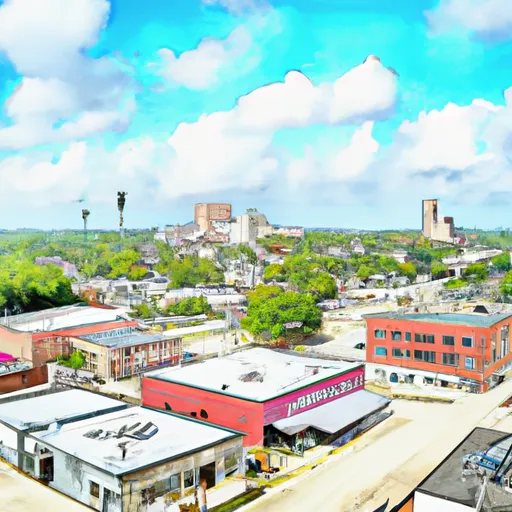-
 Snoflo Premium
Snoflo Premium
Get unlimited access to all our content
With no Ad interruptions! - Start Your Free Trial Login with existing account
Silsbee
Eden Index
Climate
7.5
•
Recreation
2.7
•
Community
2.8
•
Safeguard
4.6/10

Silsbee, Texas is a charming city located in Hardin County, southeast of the state. The region experiences a humid subtropical climate, characterized by hot and humid summers, mild winters, and ample rainfall throughout the year. Summers see temperatures ranging from the mid-80s to mid-90s Fahrenheit, while winter temperatures average in the 40s to 60s Fahrenheit range.
Hydrologically, Silsbee is situated near the Neches River, which runs through the city and provides a source of water for various activities. The Neches River is also a popular spot for fishing, boating, and wildlife observation.
Outdoor enthusiasts will find numerous recreational opportunities in Silsbee and its surroundings. The Big Thicket National Preserve, situated nearby, offers over 100,000 acres of diverse ecosystems and is perfect for hiking, birdwatching, and camping. Village Creek State Park is another nearby attraction that features beautiful forests, wetlands, and a creek for various outdoor activities like canoeing, fishing, and picnicking.
In summary, Silsbee, Texas, offers a humid subtropical climate, access to the Neches River for hydrology enthusiasts, and a wealth of outdoor recreation opportunities in the form of national parks and state parks in its vicinity.
What is the Eden Index?
The Snoflo Eden Index serves as a comprehensive rating system for regions, evaluating their desirability through a holistic assessment of climate health, outdoor recreation opportunities, and natural disaster risk, acknowledging the profound impact of these factors on livability and well-being.
Climate Health Indicator (CHI): 7.5
Silsbee receives approximately
1462mm of rain per year,
with humidity levels near 80%
and air temperatures averaging around
20°C.
Silsbee has a plant hardyness factor of
8, meaning
plants and agriculture in this region tend to thrive here all year round.
By considering the ideal temperature range, reliable water supplies, clean air, and stable seasonal rain or snowpacks, the Climate Health Indicator (CHI) underscores the significance of a healthy climate as the foundation for quality living.
A healthy climate is paramount for ensuring a high quality of life and livability in a region, fostering both physical well-being and environmental harmony. This can be characterized by ideal temperatures, reliable access to water supplies, clean air, and consistent seasonal rain or snowpacks.
Weather Forecast
Streamflow Conditions
Neches
Area Rivers
Neches
Snowpack Depths
Neches
Reservoir Storage Capacity
Neches
Groundwater Levels
Recreational Opportunity Index (ROI): 2.7
The Recreational Opportunity Index (ROI) recognizes the value of outdoor recreational options, such as parks, hiking trails, camping sites, and fishing spots, while acknowledging that climate plays a pivotal role in ensuring the comfort and consistency of these experiences.
Access to outdoor recreational opportunities, encompassing activities such as parks, hiking, camping, and fishing, is crucial for overall well-being, and the climate plays a pivotal role in enabling and enhancing these experiences, ensuring that individuals can engage in nature-based activities comfortably and consistently.
Camping Areas
| Campground | Campsites | Reservations | Toilets | Showers | Elevation |
|---|---|---|---|---|---|
| Boykin Spring | 25 | 220 ft | |||
| Campers Cove - Town Bluff Reservoir | None | 93 ft | |||
| Twin Dikes - Sam Rayburn Reservior | 45 | 198 ft | |||
| Magnolia Ridge - Town Bluff Reservoir | 40 | 90 ft | |||
| Winnie - Stowell County Park | None | 22 ft | |||
| Village Creek State Park | 41 | 36 ft | |||
| Martin Dies State Park | 225 | 88 ft | |||
| Ebenezer - Sam Rayburn Reservoir | 30 | 192 ft | |||
| Sandy Creek - Town Bluff Reservoir | 70 | 112 ft | |||
| Bouton Lake | 7 | 144 ft |
Nearby Ski Areas
Catastrophe Safeguard Index (CSI):
The Catastrophe Safeguard Index (CSI) recognizes that natural disaster risk, encompassing floods, fires, hurricanes, and tornadoes, can drastically affect safety and the overall appeal of an area.
The level of natural disaster risk in a region significantly affects safety and the overall livability, with climate change amplifying these risks by potentially increasing the frequency and intensity of events like floods, fires, hurricanes, and tornadoes, thereby posing substantial challenges to community resilience and well-being.
Community Resilience Indicator (CRI): 2.8
The Community Resilience Indicator (CRI) recognizes that education, healthcare, and socioeconomics are crucial to the well-being of a region. The CRI acknowledges the profound impact of these elements on residents' overall quality of life. By evaluating educational resources, healthcare accessibility, and economic inclusivity, the index captures the essential aspects that contribute to a thriving community, fostering resident satisfaction, equity, and social cohesion.

